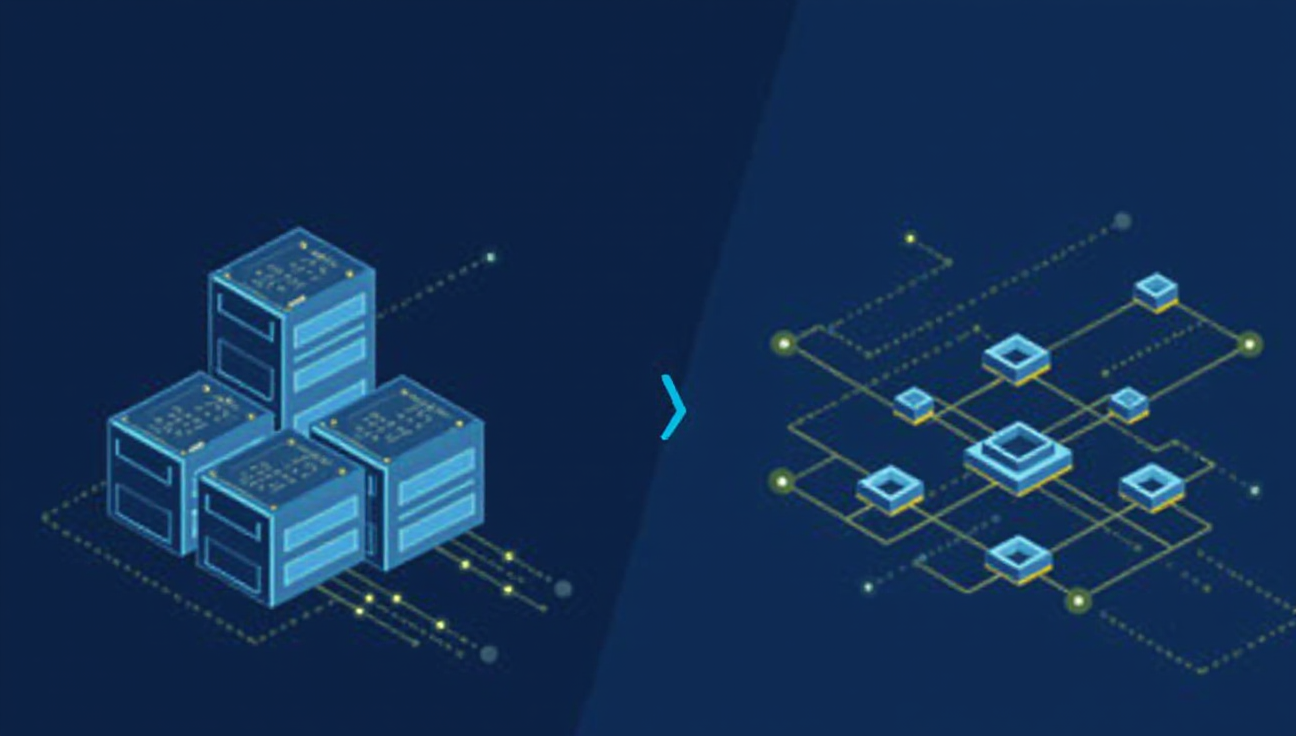Monolithic vs. Microservices: Understanding the Basics
 Ashutosh Sharma
Ashutosh Sharma
When building software applications, developers often face a key architectural decision: Monolithic or Microservices. Both approaches have their pros and cons, and understanding them can help you choose the right one for your project. Let’s break them down in simple terms.
What is a Monolithic Architecture?
A Monolithic application is a single, unified codebase where all components are tightly connected and run as one.
Think of it like a big container that holds everything needed for the application:
Frontend: User interface (UI) logic.
Backend: Business logic (like calculations or rules).
Database: Data storage.
Advantages of Monolithic Architecture:
Simplicity: Easy to develop, test, and deploy as a single unit.
Performance: Since all components are in one place, communication between them is faster.
Cost-Effective: Fewer resources are needed for deployment and management.
Disadvantages of Monolithic Architecture:
Scalability Issues: Scaling specific parts of the application is difficult.
Complex Maintenance: As the app grows, managing and updating the code becomes challenging.
Risk of Failure: A bug in one part can bring down the entire application.
What is Microservices Architecture?
Microservices break down an application into smaller, independent services. Each service performs a specific function and communicates with others through APIs.
Think of it as dividing a large task into smaller, manageable pieces that can work independently.
Advantages of Microservices Architecture:
Scalability: Individual services can be scaled based on demand.
Flexibility: Each service can use different technologies or programming languages.
Fault Isolation: If one service fails, the rest of the application can continue to function.
Faster Development: Teams can work on different services simultaneously.
Disadvantages of Microservices Architecture:
Complexity: Managing multiple services and ensuring smooth communication can be challenging.
Higher Cost: Requires more infrastructure, such as containerization (e.g., Docker) or orchestration tools (e.g., Kubernetes).
Latency: Communication between services can introduce delays.
Key Differences Between Monolithic and Microservices
| Feature | Monolithic | Microservices |
| Structure | Single, unified codebase | Multiple independent services |
| Scalability | Limited | Highly scalable |
| Flexibility | Low | High |
| Deployment | Entire app deployed as one | Services deployed independently |
| Technology | Single stack | Can mix technologies |
| Failure Impact | Entire app may go down | Localized to one service |
When to Use Which?
Go for Monolithic If:
You are building a small application or MVP (Minimum Viable Product).
Your team is small, and resources are limited.
Simplicity and cost-effectiveness are your priorities.
Go for Microservices If:
You are building a large, complex application with high scalability needs.
Your team is experienced in handling distributed systems.
You want flexibility to use different technologies for different services.
Conclusion
Choosing between Monolithic and Microservices depends on your project’s size, goals, and resources.
For small, straightforward projects, Monolithic is often the better choice.
For large-scale, dynamic projects, Microservices provide the flexibility and scalability needed for growth.
Subscribe to my newsletter
Read articles from Ashutosh Sharma directly inside your inbox. Subscribe to the newsletter, and don't miss out.
Written by
